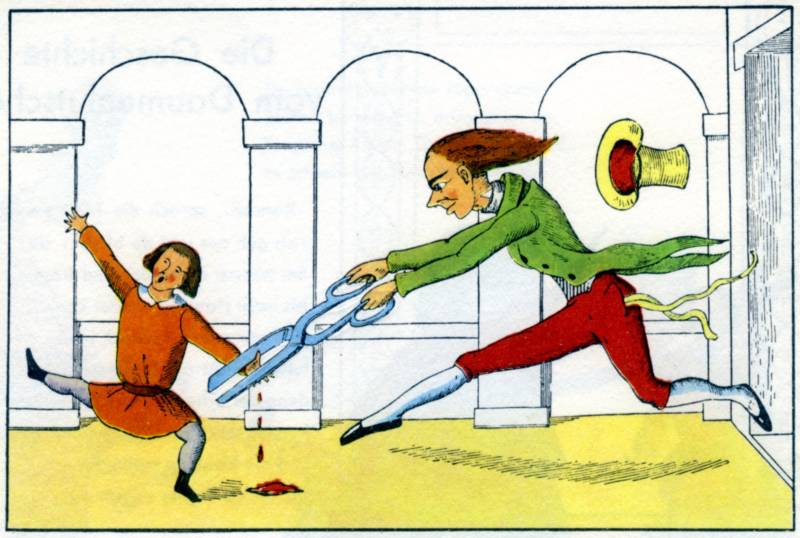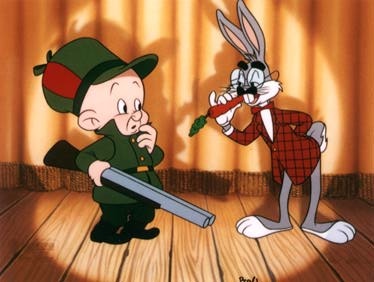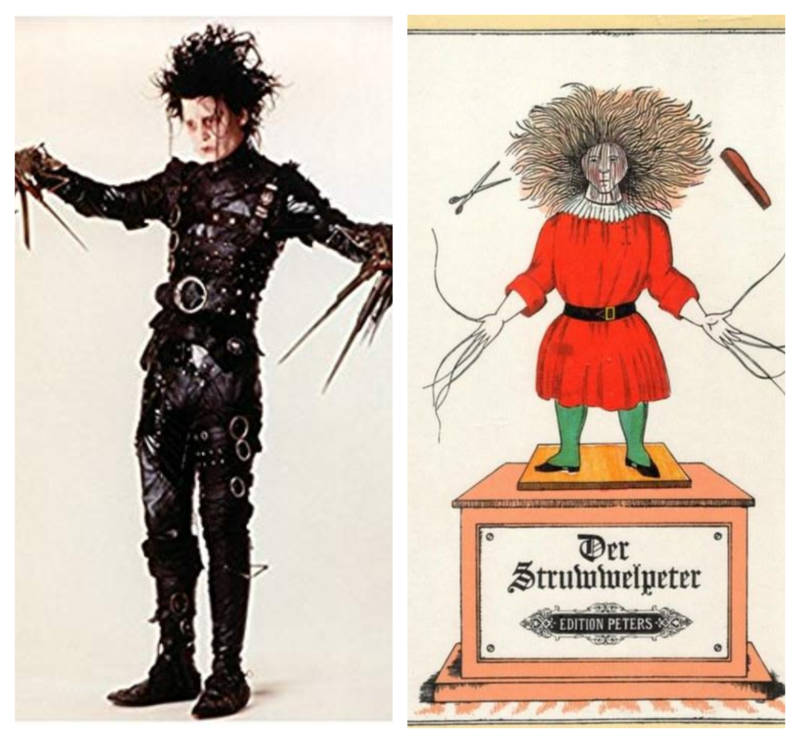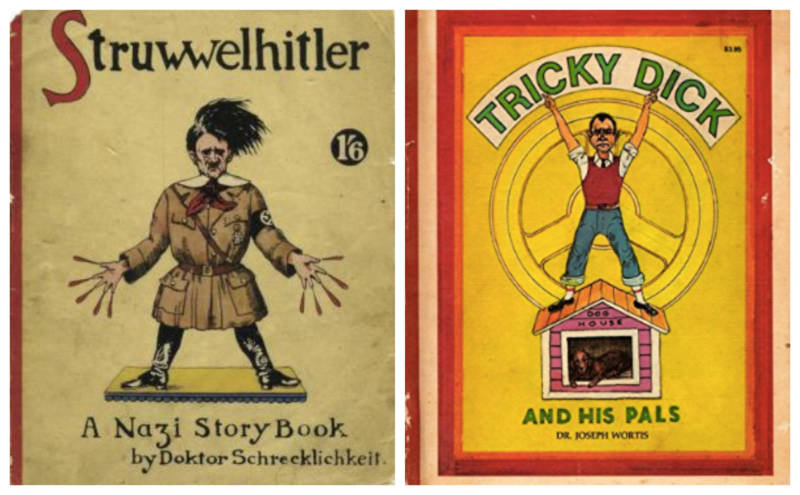It’s a collection of children’s stories so brutal, it almost outdoes the Brothers Grimm.
The tales of Der Struwwelpeter by Heinrich Hoffman are short, sharp, shocking, and they’ve left a surprisingly deep mark on culture, even though most living Americans have never read them. Today, the astonishing content of Der Struwwelpeter hasn’t only irreversibly impacted children’s literature—its influence can still be seen in movies, cartoons, TV shows, and a wealth of parodies.
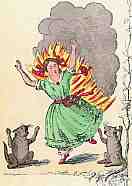
To give you some idea of the savagery of the 10 stories in the 1845 collection, consider “The Dreadful Story of Harriet and the Matches,” about a little girl who accidentally sets herself on fire and burns to death while her pet cats watch. Then there’s “The Story of Little Suck-a-Thumb,” about a boy named Conrad who refuses to stop sucking his thumbs and subsequently watches them both severed by a creepy, long-legged home-invader.
In between are tales of comeuppance for characters committing surprisingly graphic animal cruelty (“Cruel Frederick”), racist harassment (“The Story of the Inky Boys” is definitely not woke by 2019 standards, but was considered progressive at the time), and the apparent dastardly sin of not watching where you’re going (“The Story of Johnny Head-in-Air”). In others, one little boy refuses to eat soup for a few days and subsequently starves to death, and another insists on going out for a walk in the rain and flies away in a storm, never to be seen again.
Despite the smörgåsbord of searing imagery in the book, the one that seems to stick most with people is that of “Shock-Headed Peter”—the Der Struwwelpeter of the book’s title. Peter is a little boy publicly humiliated by his own slovenliness. He is depicted as crying and alone “with his nasty hair and hands.” Peter, especially out of context, is pretty damn scary.
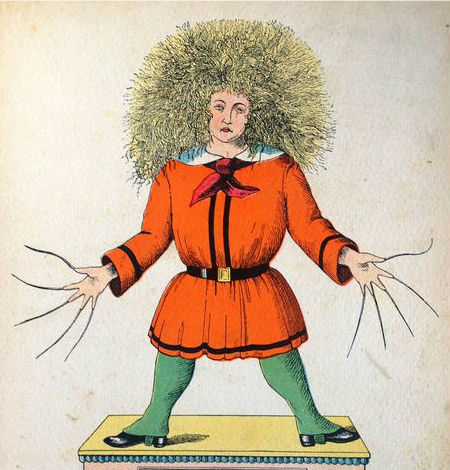
My introduction to Der Struwwelpeter occurred purely because of this image, which I recently encountered on the sixth floor of the San Francisco Public Library, hanging in the SF History room. The panel featuring Peter’s image was created for the library’s 100th anniversary last year, and still regularly causes a stir. One librarian informed me that a woman recently walked into the room, saw Peter, screamed, then shouted “Get that thing out of here!”
